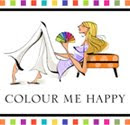
to say the least, there has been much controversy over the new adobe platform since they launched the creative cloud last year. and it hasn’t stopped. just this week i was reading a post and not one single person wrote a positive note in the comment section. some were even plain nasty. of course, except for maybe a couple of readers, none had a membership to the new creative cloud either.
so why are people having such disdain for this new platform? as far as i can tell, no one has even tried it. where is all the hatred and aggression coming from? is it really aimed at adobe, or is it just fear of another corporate dependence? i for one read a ton about it before making the choice about a year ago between purchasing the creative suite 6 (CS6) premium, or getting a membership to the creative cloud (CC). having just purchased a new macbook pro, about half the software on my old powerbook were not compatible with my new intel processor. that included my creative suite. sounds familiar?
for one, i have to say i really wasn’t crazy about the idea of renting a software — never mind multiple software. and honestly, i still have some issues with that, though i guess it’s no worse than leasing a vehicle. but a quick run of the calculator made me look at it more closely.
here are the choices that i (that’s me, with my needs) was facing:
these numbers do not include taxes

now i’m no warren buffett, but this seemed like a slam dunk to me.
now here are some criteria to also consider:
• depending on your system upgrades, be it hardware or operating system, an upgrade on your creative suite is necessary maybe once or twice at the minimum over a 10-year period. (i upgraded mine twice, inclusive of the CC)
• an upgrade from two consecutive suite is about half price. an upgrade from nonconsecutive suites is full price (same as purchasing anew).
• the creative cloud is not just the premium suite (sold for US $1900), but it is all of adobe’s software, sold as the master suite for US $2600. that is a huge distinction.
• looking at the other services included in your membership, like typekit (1000 fonts for the web), a membership to behance prosite (a web platform designed for creative portfolios), 20GB storage space (for hosting up to 5 websites or for file-sharing)... what is the value of all these extra bits to you? (for me, in cash savings, $200+ / although the value is a lot more)
if you are the type of person who upgraded your suite every single time one was available (about every 18-months), this may be a huge saving for you. and then again, maybe you really don’t give a hoot about that since obviously you were able to afford it.
on the other hand, if like me you couldn’t justify spending $800+ every 18-months just to keep your software up-to-date, and managed to keep your creative suite functional for as long as you could, then crunching the numbers is the only way to actually make a sound decision on the issue.
and that’s what i did. i figured with no upgrades whatsoever, after 5 years the game is even. but can we know for sure we can last this long without an upgrade? and remember, we are getting a lot more for our money too — we are getting all of it. the answer i came up with works for me. adobe may be making more continuous income from me ($50/mth), but i am also getting a lot more from adobe on each of my dollar spent. it’s a fair game.
here is a fact:
change is always hard on people. it’s a human fact: some people take change with opened arms and a smile on their face, and others kick and scream all the way. that’s just life.
here is another fact:
adobe has no plans for future releases of creative suite or other CS products (ref). so good or bad, the new adobe creative cloud is definitely here to stay.
better get used to it...
hopefully with a smile on your face... :)






















































